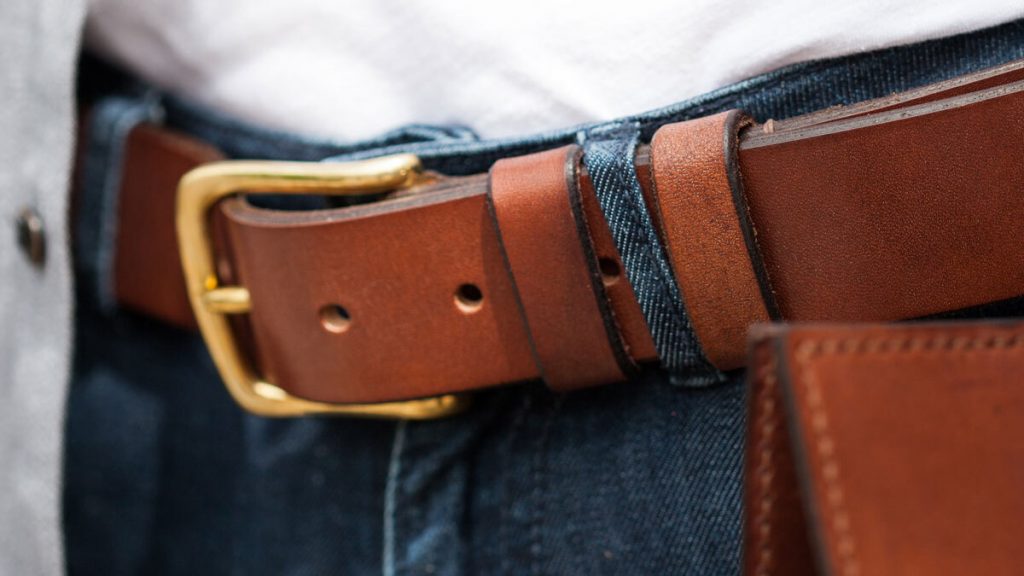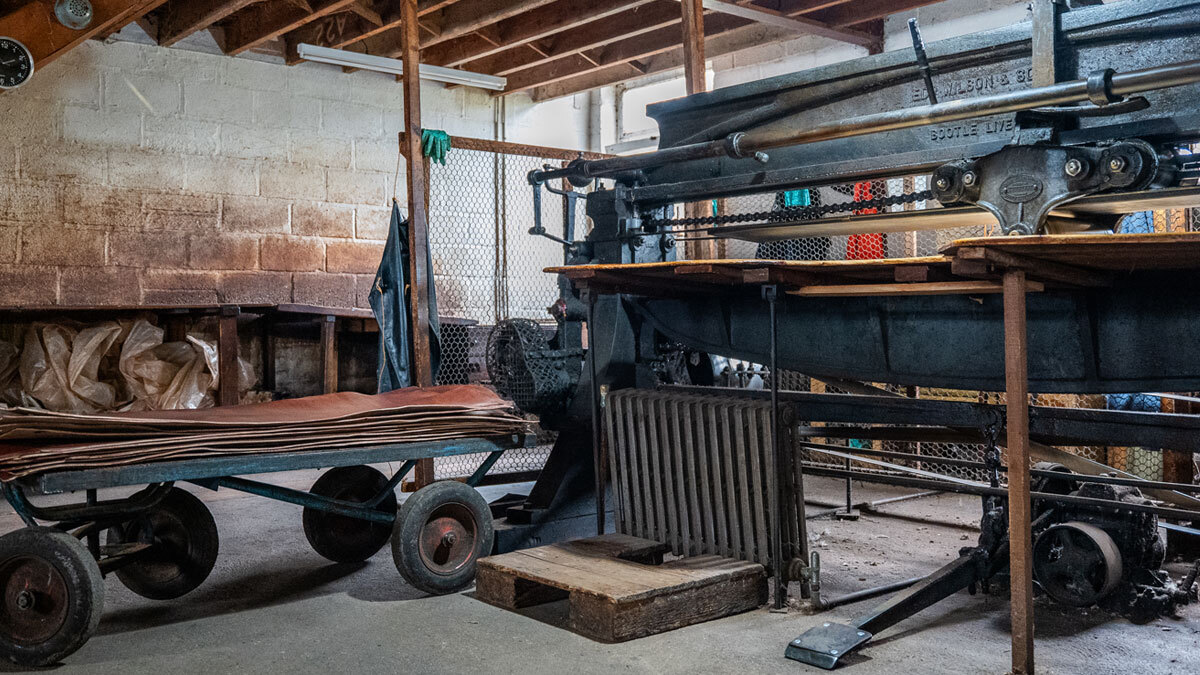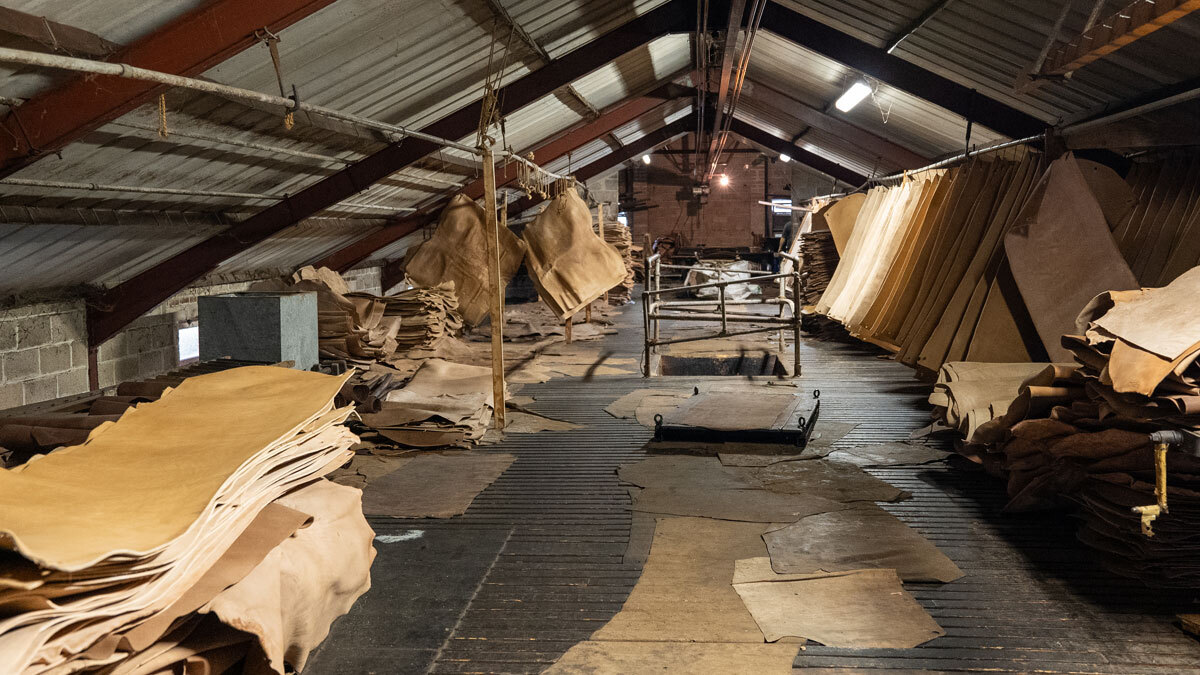It turns out you don’t need a time machine to take a peek into life a few centuries back. A visit to this incredible Devon tannery, which has been on the same site since the Roman times, and in the hands of the same family since 1862, will give you a pretty good idea of what working tannery life was like.
As you enter each building (I lost count how many there were, but there are several), you are going back to a different time in history as you watch each process being carried out, which in the most part, hasn’t changed for centuries. The smells range from a rather pungent, acrid stench to a mixture of woody oak bark and comforting, warming leather. I noted that the latter reminded me of my dear grannie’s living room! She lived in a lovely old farmhouse, always had a wood fire lit, had a variety of vintage leather sofas and a 1970s style oak bar in the corner. I am sure you can picture the scene!
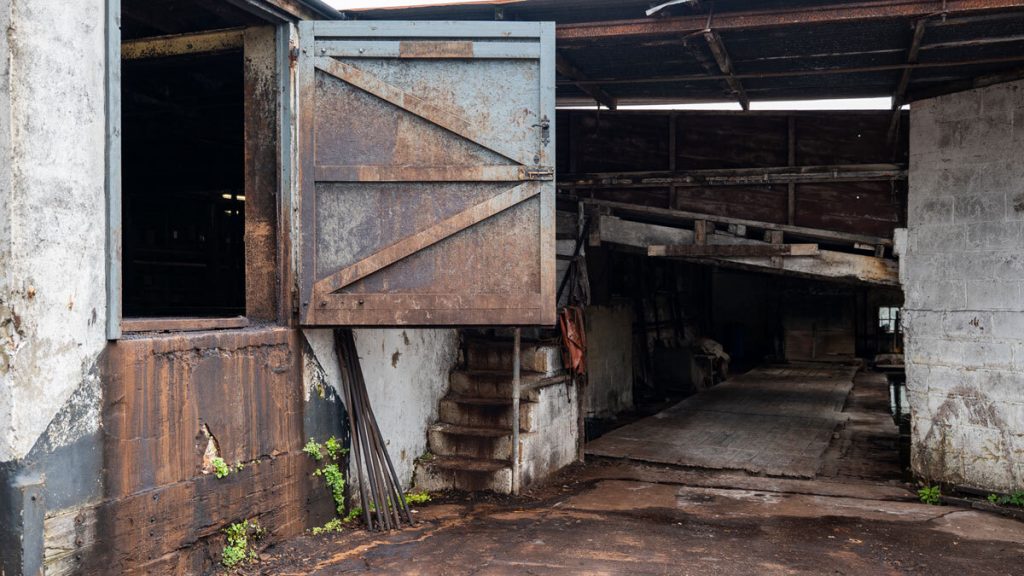
J & FJ Baker & Co supplies leathers to some of the most prestigious companies in the world. They craft what is viewed as the best and most sustainable quality leathers. They are sought across the globe for equestrian equipment and interiors, and by shoe makers, Paris-based fashion houses, the railway industry and royalty. The list goes on. Perhaps, most relevant to us as shoemakers, they provide oak-bark tanned out-soles which are renowned for being flexible and hard-wearing due to the careful management of the fibres during the tanning process. This also makes oak-bark tanned leather the ideal material for belts which led us to Tanner Bates who were the inspiration for our visit. They make a gorgeous handmade selection of belts and bags for us using this amazing leather.
We were lucky enough to come across some lovely, knowledgeable, welcoming craftsmen during our visit. After a conversation with Pete, who was setting the leather when we undoubtedly got in his way and slowed him down (thank you for your patience), you get a real sense of how much they value self-sufficiency, sustainability, attention to detail, and importantly, tradition. They are all enthusiastically proud to be working there. This flows down from the top, in particular from Lizzie, who is the sixth generation of owners. What she doesn’t know about leather tanning is, well, simply not worth knowing.
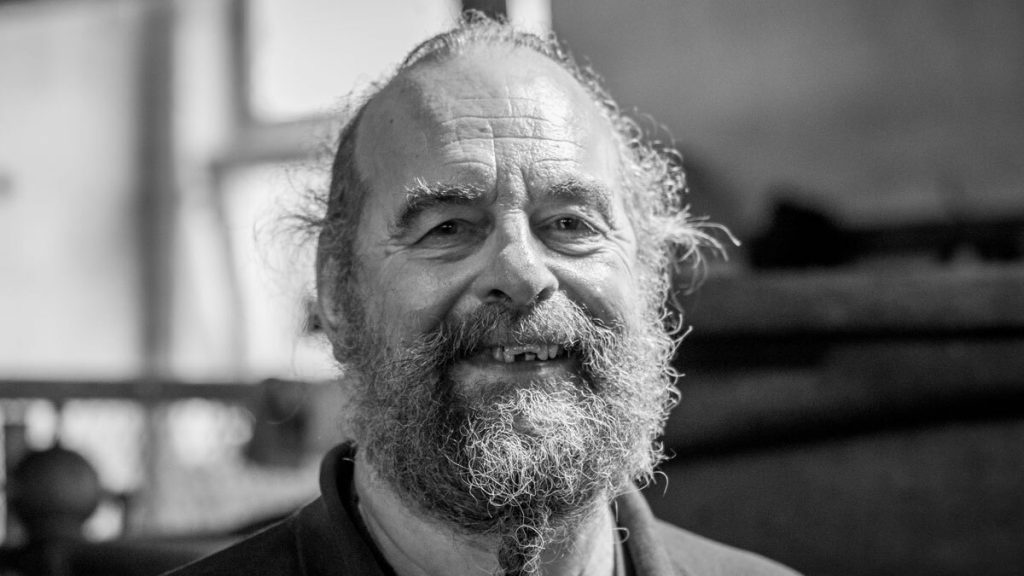
Why is oak bark leather so good? It takes around 13 months to create a finished piece of oak bark leather. It’s a process that requires patience, hard work, and a careful balance of waxes (the exact recipe is a closely guarded secret). From the preparation, to the greasing and staining, each step involves its own unique challenges to which the craftsmen are well versed.
I was pleasantly surprised to learn that almost every piece of discarded material ends up being used one way or another. Perhaps most importantly though, their leathers are sourced from local Devon farmers, who use low impact farming methods; the animals are grass fed and free range. You soon learn that from start to finish, if any of this process is rushed, you end up with leathers that can crack, age poorly, lack durability, and don’t have the right depth of texture. It’s fascinating to see them applying the same techniques used when they first began all those years ago, albeit with the addition of some modern machinery to help ease the labour for the craftsmen.
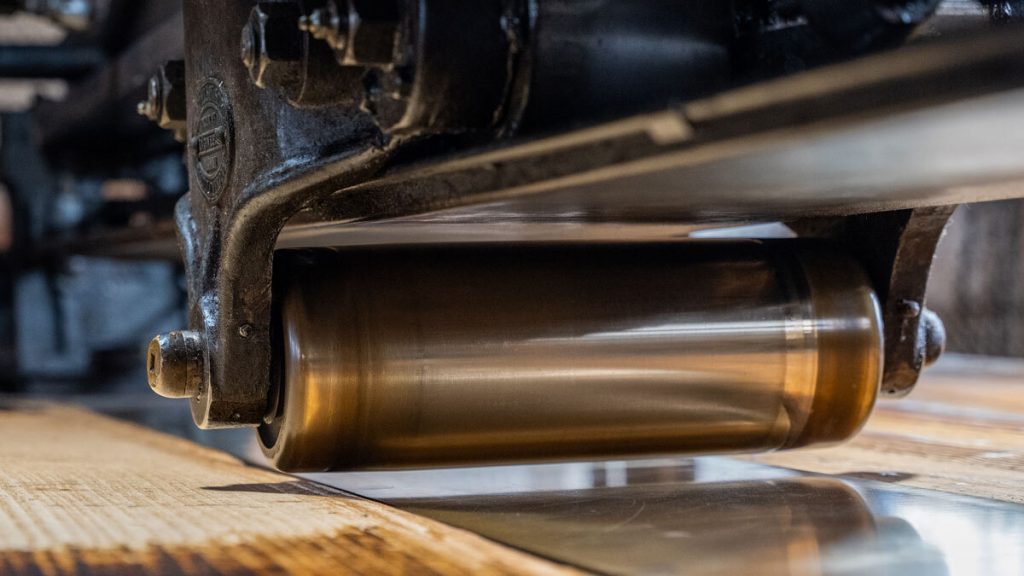
Of course, the exact process is quite complex, so I shall let the experts explain it in further detail through this link to their website, just click here.
Next time you see a product made from oak bark leather, you will hopefully think back to this journal and remember the work that has gone into each piece that leaves their warehouse.
To see all products on our site made using oak bark leather, please see this link.
I would like to extend a huge thank you to Lizzie and the team for sharing their knowledge and allowing us the opportunity to explore, chat, and learn about your wonderful company.
